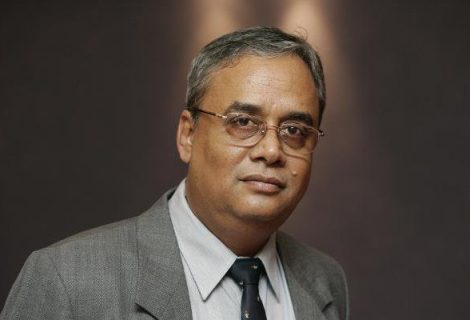Bhasha Mandakini – Bangla, Kannada, Tamil & Marathi
Project Details
Date
September 24, 2015Project Description
Between 2005 and 2009, I had conceptualized and created a whole new programme titled Bhasha Mandakini in four Indian languages – Bangla, Kannada, Tamil and Marathi which aimed at creating supporting teaching materials in modern Indian languages through the medium of ‘Television’. It aimed at covering the ‘Universe’ of each of these languages. In brief, this language-teaching package was like a visual/virtual encyclopedia of the concerned language using the powerful medium of films. Instructional materials thus produced for each language was known by its name; hence, Tamil Bhasha Mandakini or Bangla Bhasha Mandakini, etc. Ideally, the package for each language had a few hundred episodes, totalling to about 800 episodes of 25 to 28 minutes each, including announcements. That restricted the actual episode to be beamed for about 23 minutes only.
- The Coverage: Under each Bhasha Mandakini, the episodes were so designed as to cover the following four major areas.
1.1 Land and people: The idea was that as all languages evolve over a period of time, and since each one of them occupy a given space, it becomes inevitable that one would have to talk about a language in terms of both temporal and spatial dimensions. It is very important for a learner of any language to know about the land where the language is spoken and about the people who speak it. Hence, geographical & demographic information (including information on dialectal varieties), historical development during different era, and a linguistic profile of the region (with respect to other language communities occupying the same space – whether major or minor speech varieties, or whether indigenous or migrated language communities) were covered here.
1.2 Culture and performances: Each of these languages was picked up knowing that each had a linkage with a set of cultural traits that made the universe of this language unique. The cultural complexities could be seen in these documentaries – particularly where there were several ethnic groups using the same language. At the same time, as each culture in the Indian geo-space is linked with another in an intricate way, and at times in an overlapping manner, that aspect also needed to be covered in some ways. Exposing the learners/audience to the cultural trait(s) of the language enhanced their learning ability, and at the same time, gave better understanding of the totality of the language. Thus, Folklore, Fine Arts, Art & Architecture, Festivals & Rituals, Food & Dress, Theatre/ Performances, and Films that together typified the space of these language was covered.
1.3 Literature: Each language has a creative side of it in that it will have oral and/or written literature. Many language learners expect to acquire a skill to be able to read such literature first hand. Exposure to the literature allows greater awareness of the language and its richness. Here, oral & written literature of the given speech community were focused. Different periods as well as genre, and important authors, texts, and milestones were also looked into. Some memorable films on authors not covered by other national agencies could be seen here.
1.4 About the language: Teaching of Spoken and Written Skills: In this area, origin and development of each language, its status and relationship with other languages, and its special variations were dealt with. As each language in India influences the other, and – in turn, gets influenced by other languages, it was decided that all language learners must be exposed to these aspects about language to get a better perspective.
All these 800-odd episodes or documentary films went through two Committees – Language Advisory Committee and an Overall Project Advisory Committee. About 125 film-makers were involved in the whole exercise under which each episode was completed and submitted by the Producers concerned after their script/screenplay was approved by the Project Advisory Committee along with the following materials
- One master tape mixed audio track on Beta, Digital tape, DVD and CD.
- Unmixed master with international track on both Beta and Digital tapes.
- One set of 24 photographs with their negatives in 35 mm or digital in CD.
- Five copies of commentary / text used in the Episode.
It was also ensured that the episodes were produced in one of the following formats: Beta S.P./ Digital Beta / DV CAM / DVC PRO (Minimum resolution of 795 x 596 (HXV) or 800 TV lines. Wherever audio, visual or audio-visual tracks, Clips, trademarks, graphs, charts, diagram’s, etc., belonging to or controlled by third parties are used, he/she/it has to obtain the required authority to use material so controlled or owned by such third parties for telecast on all forms – along with relevant Phonographic Performance Limited (or, PPL) permission. All narrators were pre-approved, and very eminent personalities had agreed to be anchor-persons in these films. All completed productions maintained excellence in technical and aesthetic standards of production. Technically the quality was as per CCIR/ITU-R specification for video and chrominance levels. Typically maximum luminance, 1 volt P.P with 0.7 volts of video and 3 volts sync pulse. Maximum chrominance saturation + 100% (colour difference signal – 0.7 volts). Audio level of the programme was within the range of + 5 db. Each of these producers had entered into an legal agreement (vetted by the legal authorities) before executing the orders. The Bhasha Mandakini Programmes became a flagship project of the Institute and many film festivals were held to show the best productions, and at present, CIIL has entered into an agreement with Prasar Bharati to show the episodes under DD’s various channels.

